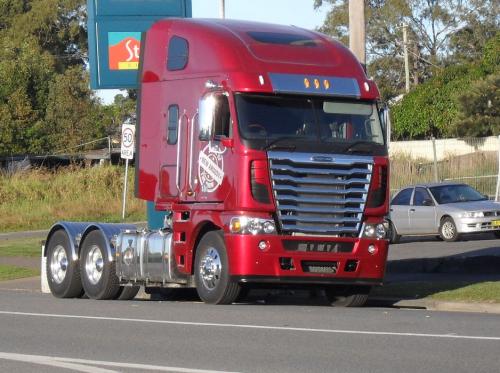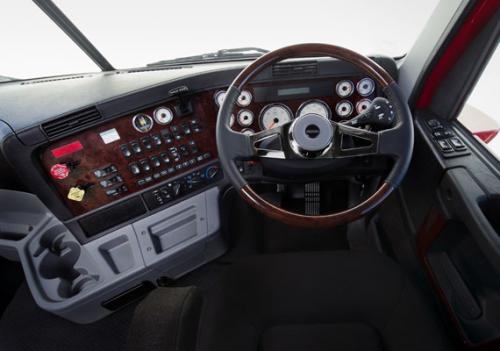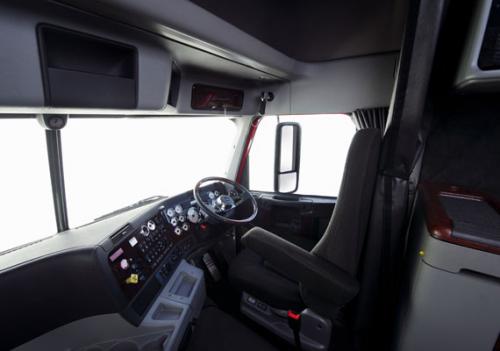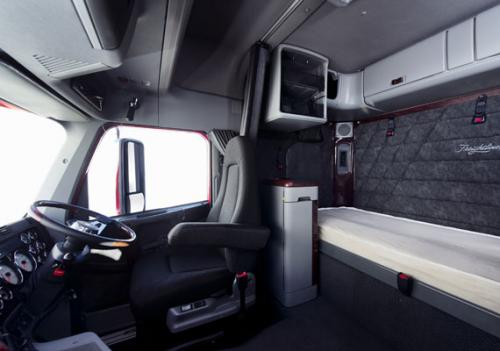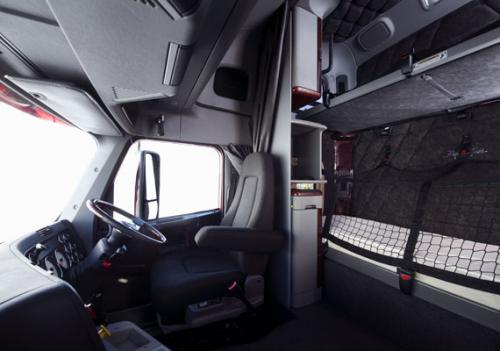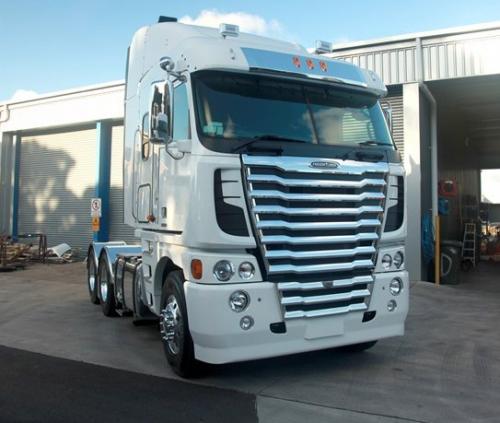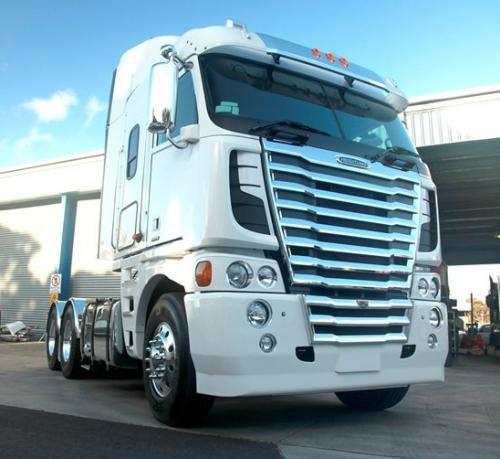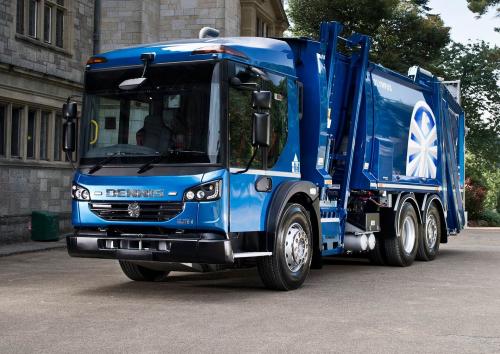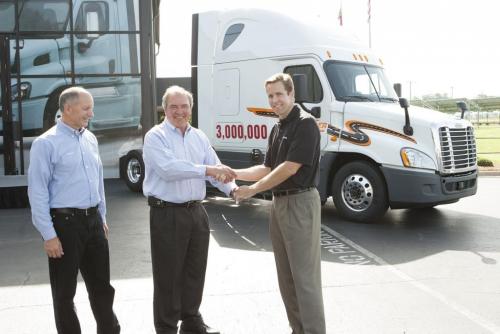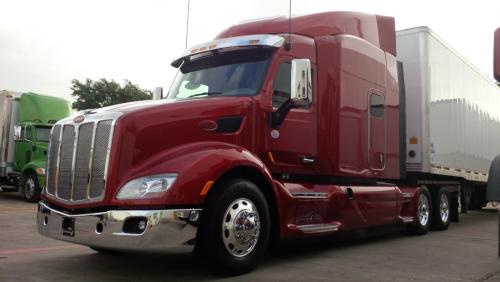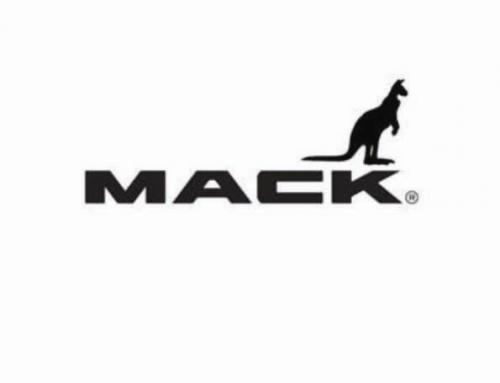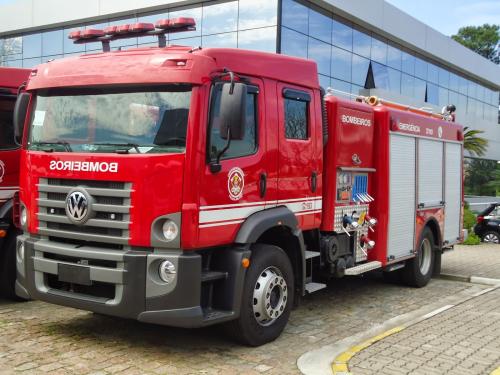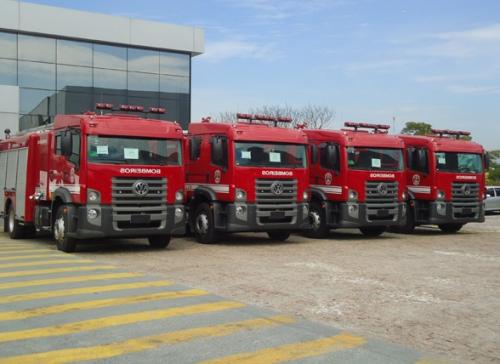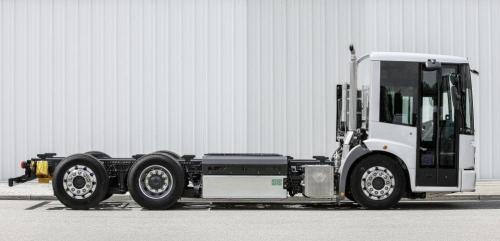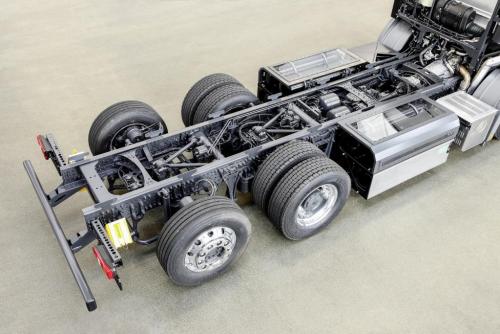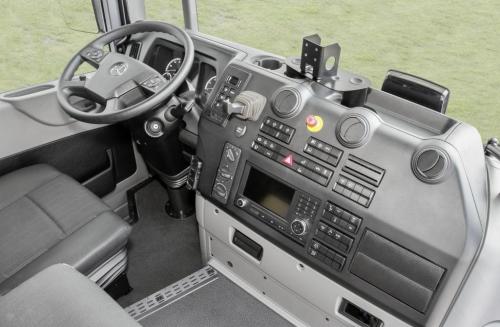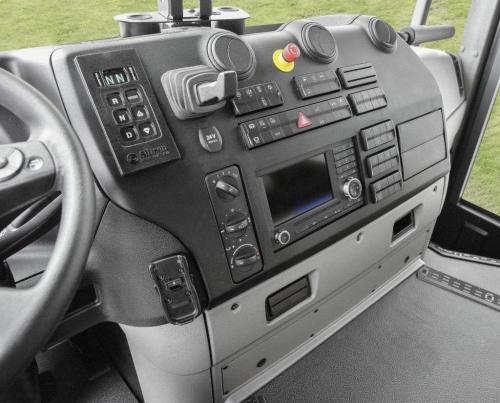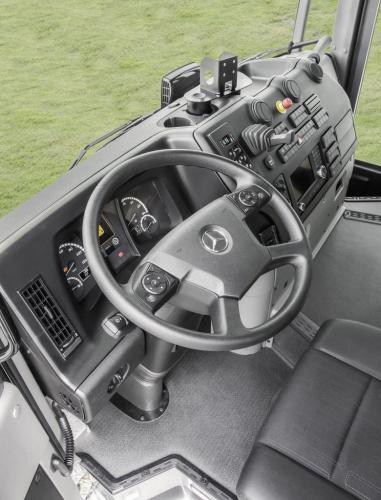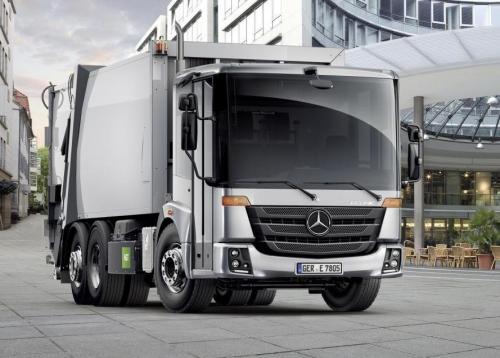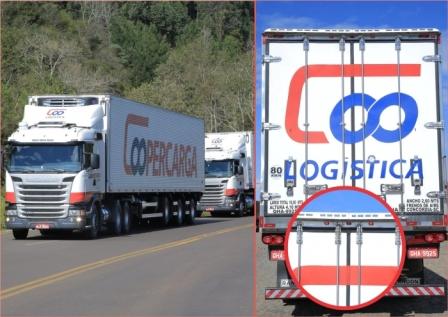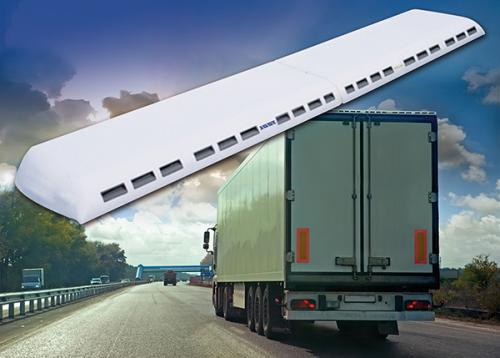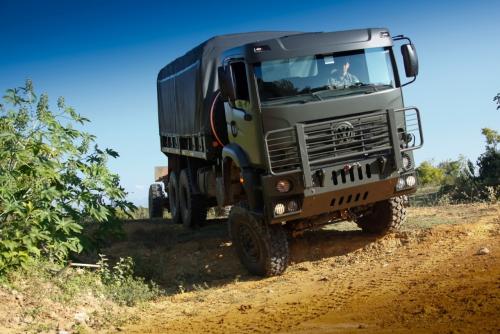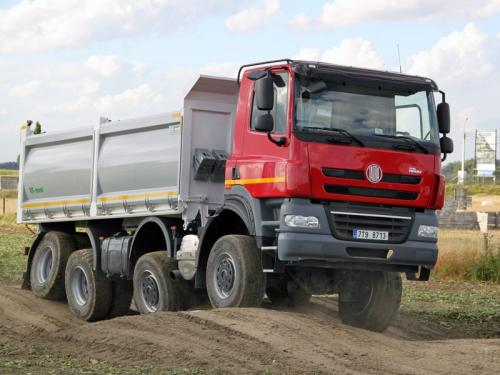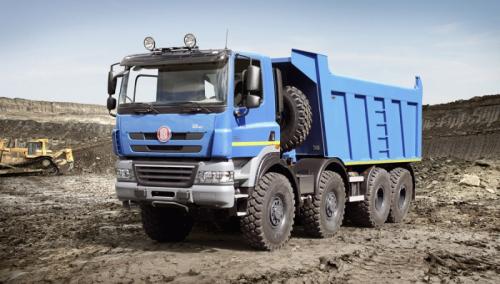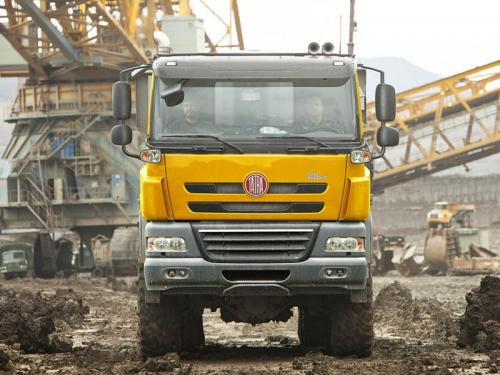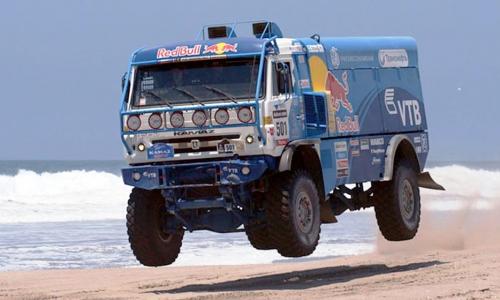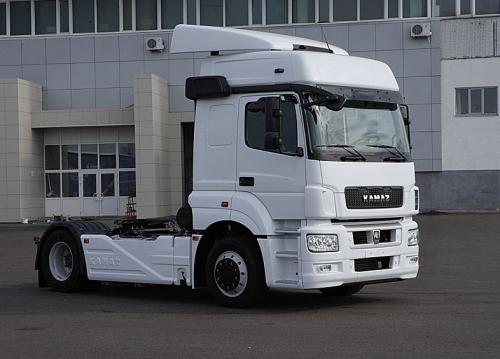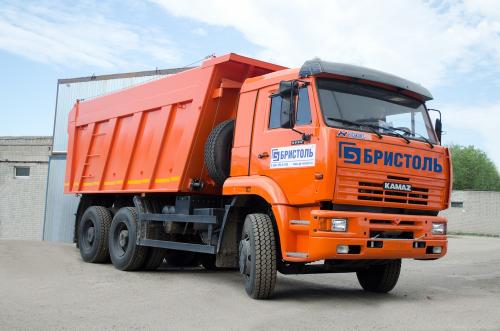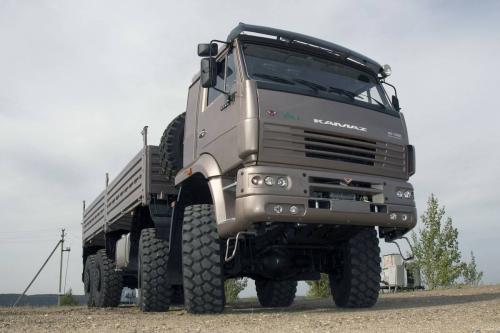
kscarbel2
Moderator-
Posts
18,876 -
Joined
-
Days Won
114
Content Type
Profiles
Forums
Gallery
Events
Blogs
BMT Wiki
Collections
Store
Everything posted by kscarbel2
-
Heavy Duty Trucking / August 29, 2014 New rules on replenishment of diesel exhaust fluid will allow vehicle manufacturers more leeway in equipping cars and trucks with DEF tanks without certifying them individually, according to the Environmental Protection Agency (EPA). One practical result is that trucks might get smaller DEF tanks than they currently have. The special fluid is widely available today so not as much of it must be carried aboard the vehicle. DEF is sprayed into diesel engines’ hot exhaust to reduce nitrogen oxide through a chemical reaction. It is the active part of selective catalytic reduction (SCR) used by virtually all truckmakers. Dosing rates are about 2% of fuel use, though this varies with the operation and engine size and type. The new rules reflect EPA’s greater confidence in availability of the special fluid. In 2001, when rules were first published, selective catalytic reduction was a new concept in North America and EPA wasn’t sure DEF would be readily available. The new rules set tank-size “ratios” of DEF to fuel, which builders can use for any vehicle. This will give manufacturers “more flexibility” in choosing tank sizes than before. Vocational trucks that return home daily for fueling can have DEF tanks that need filling whenever the fuel tanks do, which the rules call a 1 to 1 ratio. This might allow trucks to carry a smaller DEF tank, which could save some weight and frame space. For long-haul trucks the ratio is 2 to 1, meaning their DEF tanks could be filled every other time the fuel tanks are. This might also allow a smaller DEF tank, though truck owners might prefer larger tanks so the fluid refilling task could be done less often. Truck builders size tanks based on estimated fluid-dosing rates, and have established several tank sizes for various truck classes. These may or may not change, but under the new rules, manufacturers could follow the 1 to 1 or 2 to 1 ratio and be legal. Truck owners and drivers are not affected, except that they must continue properly maintaining their vehicles so the anti-pollution equipment, including SCR gear, works properly. Like now, failure to keep enough fluid in DEF tanks results in warning lights and eventual cutting of power and torque until tanks are replenished. However, the rules might have more effect on diesel-powered light-duty vehicles, especially cars, because EPA wants replenishing schedules to be shorter than they are becoming, said Allen Schaeffer, executive director at the Diesel Technology Forum. Manufacturers have sized DEF tanks so top-offs could be done at engine oil-change times, when dealers and service shops could do both, and motorists need not be concerned with DEF. But those intervals are becoming longer, Schaeffer noted, and EPA worries that fluid fills could be delayed. Motorists who drive diesel-powered cars might have to learn about DEF and know when to top off the tanks. The rules continue exemptions for emergency vehicles, like fire trucks and ambulances, so their diesels can keep operating at full power even if DEF tanks run low. Emergency exemptions for off-road engines, like diesel-powered generators and pumps, also remain in effect.
-
25th Anniversary Freightliner Argosy Revealed
kscarbel2 replied to kscarbel2's topic in Trucking News
I think the Freightliner Argosy II is an absolutely stunning COE. Their engineers did a marvelous job. The grille reminds of the sharp looking new grille on the impressive new Hyundai Xcient. Perhaps some of you don't care for the grille on the 25th anniversary variant extending downward into the bumper area. It arguably makes the grill too obtrusive. I myself prefer the standard version with the uninterrupted front bumper (as shown below). With the soon demise of the International 9800i, the Freightliner Argosy II and Kenworth K200 will be the last COEs produced by American brands. These trucks are built in Cleveland, North Carolina, and then shipped SKD (semi-knocked down) to other global regions including South Africa, Australia and New Zealand. Ironic that they're built in the U.S., but Americans operators can not buy one (Wal-Mart has purchased glider kits). . -
Australasian Transport News / August 28, 2014 Limited-edition Freightliner Argosy trucks add a touch of luxury Three Freightliner dealerships are releasing limited-edition, new-look Argosy trucks to celebrate 25 years of the brand’s presence in Australia. Earlier this year Freightliner unveiled a limited-edition Coronado, and now it is following up that effort with an Argosy version. Like the limited-edition Coronado, just 25 of the trucks have been made, and they bring with them a host of aesthetic and comfort improvements. All of these modifications were done at the one place, Stillwell Trucks in Sydney, in order to guarantee a consistent look and feel. Freightliner’s first foray into the Australian market in 1989 was the FLC112 coming off the assembly line in Mulgrave, Victoria, but it wasn’t until 2000 that the first Argosy cab-over truck was introduced. The ‘new-generation’ Argosy arrived in 2011, bringing with it a more modern design. "The Argosy was our hero truck, and has been for many years in the Freightliner line-up. We probably haven’t seen as much activity as we would have expected over this first 8 months of the year, so we’ve decided to be proactive and lift the profile of the truck by taking it into a new level of comfort, quietness and class," Stillwell Trucks managing director Steve Shearer says. "We wanted to reinvigorate the Argosy into the market," Shearer adds. An immediately noticeable change on the exterior of the truck is the deeper grill and the addition of a shiny new Whitlock bull bar, complete with a 25th anniversary badge. The interior has also undergone a facelift, with leather and suede being a theme throughout the cabin. "Our Argosy had a hard plastic dash area, it didn’t portray it as a high-quality truck, and it wasn’t where it needed to be. What we’ve done is give it a European-style feel," Shearer says. The seats have also been orthopedically redesigned and reupholstered. Further, insulation material has been added to the floor of the cabin to reduce noise and vibration in both the seating and bunk area. "The quietness of the cabin is something to behold, it doesn’t sound like you are in an Argosy," Shearer adds. Not much has changed on the engine side, with the limited-edition versions retaining the Argosy’s Detroit Diesel DD15 engine. This also means that the engine will continue to have the 5-year/one-million kilometre warranty. Stillwell Trucks in Sydney is just one of three Freightliner dealerships that will be selling the Argosys, the other two being Whitehorse Trucks in Melbourne, and Daimler trucks in Adelaide. Argosy customers will be invited to the official unveiling of the limited-edition model, which will be at a launch event held on September 15 at all three dealerships. https://www.freightliner.com.au/25-years-in-australia .
-
Diesel News / August 28, 2014 The new shape Actros is set to be on sale here in Australia by the end of 2016 and will be available in Euro 5 as well as Euro 6 versions. The truck was released in Europe in the lead up to the introduction of Euro 6 in the EU in 2011, but the German truck manufacturer had hesitated to release it here before new emission regulations demanded it. The Actros design is a complete departure from anything offered by Benz in the past. They have moved away from the V6 and V8 engines currently offered and gone to the Mercedes Benz version of the same basic engine block used in the Detroit DD 13 and 15. Of course, the engine mapping and performance are completely different to that offered in the Detroit version, more suited to European driving conditions. Originally it was expected the new Actros would only be offered as a Euro 6 emissions level engine. However, Diesel News has learned this week, from the new General Manager Mercedes Benz Truck and Bus, Justin Whitford, there will be a version compliant with the current ADR 80/03 emission rules for customers who prefer it. Benz is about to begin a substantial program of testing of the new Actros on our roads. As the new shape will be impossible to fully disguise, we can expect to see a couple of unusual test prime movers appear in a selection of fleets in the next couple of years. http://www.youtube.com/watch?v=_Ef7vsAFY7g#t=60
-
Truck News / August 27, 2014 With Canadian policymakers set to discuss regulations that prohibit advanced 6x2s axle configurations later this year, manufacturers and fleets have stepped up their efforts to raise awareness of the technology’s benefits. Meritor has produced a nine-minute video, including appearances from fleets in the US and Canada and even competitor Bendix, which explains how 6×2 axles work and why they don’t pose a threat to Canada’s roadways. The video, which can be watched below, details the benefits of 6x2s and highlights why demand for this configuration is expected to rapidly increase. Canada doesn’t allow 6×2 axles because a Memorandum of Understanding signed onto by the provinces requires tandem axles to be within 1,000 kgs of each other at all times. With 6x2s, this is true about 97% of the time, however, advanced electronics shift the load to the driven axle in low-traction scenarios. You can read more about Canada’s 6×2 regulations here. Meritor and its partners have also created a new Web site at 6x2Facts.com to raise awareness of the issue.
-
GINAF is legendary in the field of severe service vocational trucks. Founded in 1948, the Netherlands-based company started out modifying World War II U.S. Army trucks for civilian use (After the war, it was deemed more cost effective to leave the trucks in Europe than bring them all back). GINAF purchases cabs and powertrains from Netherlands-based truckmaker DAF (a Paccar subsidiary). Very much a specialty truck manufacturer, GINAF makes trucks to order. Every GINAF is built with the highest load capacity and high reserve margins, resulting in greater profitability and lower operating costs. The company’s product range extends from the medium segment up to ultra heavy duty, with axle configurations from 4x2 to 10x8, for everything from construction and mining to military tank transport. GINAF was the first truckmaker in Western Europe to build an 8x8 chassis for civilian use, followed by the world’s first 10x8 chassis. http://www.ginaf.nl/index.php?id=47&L=1 The company was also an early user of Vehicle Systems Engineering’s electronically-controlled hydro-pneumatic suspension systems and electronic vehicle steering systems. http://www.ginaf.nl/index.php?id=33&L=1 http://www.ginaf.nl/index.php?id=69&L=1 GINAF offers Bosch-Rexroth produced hydraulically-driven steer axles (HydroAxle*) for “traction on demand” all-wheel drive capability. http://www.ginaf.nl/index.php?id=293&L=1 * Similar to the AddiDrive system from France-based Poclain Hydraulics used by MAN, M-B, Renault, Terberg and Volvo. http://www.poclain-hydraulics.com/_upload/ressources/media/pdf/AddiDriveAssist.pdf?nc http://www.poclain-hydraulics.com/en/systems/trucks/enhanced-mobility-front-wheel-assistance-ref26 Assembly of a 60-metric ton (132,277 lb) GINAF model HD5380T 10x6 mining truck. http://www.youtube.com/watch?v=ffKITvEiNkE#t=14 Assembly of a 50-metric ton (110,231 lb) GINAF model X5250TS 10x4 dump truck http://www.youtube.com/watch?v=iHH3IQegGdM http://www.youtube.com/watch?v=nAdfFWGWLlA
-
Reuters / August 27, 2014 Daimler will pay $480 million to settle a dispute with the UAW over medical benefits for retired employees of its North American trucks business, U.S. court records show. The company has agreed to contribute to a trust to fund a post-retirement health care plan to support active and recently retired UAW-represented employees, according to documents filed on Monday in a federal court in Tennessee. The agreement came after a group of retirees and the union accused the truck manufacturer of illegally cutting their benefits, the court filings show. A Daimler spokesman referred to the company's quarterly earnings report which said Daimler Trucks North America LLC and the UAW had entered into an agreement over a health care plan as part of a collective bargaining agreement in May, and that the resulting cash outflow was expected in the fourth quarter. The earnings report said the settlement had no material impact on the group's consolidated statement of income or on the earnings before interest and taxes of its trucks business.
-
Netherlands-based Vehicle Systems Engineering BV (VSE) has been producing hydro-pneumatic vehicle suspensions since 1986. With the advent of electronic controls, VSE updated the system and named the new generation Dynamic Truck and Trailer Suspension (DTS). A system already proven on trucks and military vehicles in Europe, Quebec's Simard Suspensions offers VSE’s DTS electronically-controlled hydro-pneumatic suspension in North America. The suspension can be spec'd for one or more fixed or steerable axles, with springs, shock-absorbers, roll stabilizer, and axle lift all combined within the DTS hydraulics. The result is perfect load distribution over all wheels, fully compensated as required. In dump application, safety is greatly enhanced by the system’s ability (utilizing optical sensors) to level the vehicle in all directions. Height settings are adjustable by remote control. Axle-load measuring and monitoring is also featured, with an integrated axle lift if needed. In dynamic terms, there's semi-active roll stabilization built in, with "super stabilization" as an option. Manual or automatic control of several level and dampening settings is also part of the package. The DTS suspension can be operated by the driver with a wireless remote control, making it possible to make adjustments of the suspension without getting out of the cab. All functions can be operated via the remote. An information display provides the driver with all relevant information related to operation, maintenance, failure analysis, and repair. The display can be mounted fixed in the system locker or as a workshop tool mounted in a case. The system can also run on any laptop computer for calibration, first-line fault diagnosis, and for changing parameters. Optionally, the display can be used for operating the suspension system: changing height, return to ride level and leveling. The suspension's hydraulic cylinders combine to manage axle travel and axle load (from 2 to 16 tons). The micro-electronic controlled DTS suspension has a reaction time of about 4 milliseconds. After about 60 milliseconds, the system has adapted to the operating conditions and the vehicle's behavior is changed with it. VSE suspension cylinders are designed for low friction, matching an air suspension in reaction times. VSE’s Electronic Truck Steering system (ETS) is a versatile steering solution for trucks with multiple steered axles. The ETS system works completely independently, with no energy is drawn from the steering for the front axle(s). Space-saving ETS reduces truck weight, fuel consumption and tire wear while significantly enhancing maneuverability and stability. http://www.v-s-e.com/en/products/suspension/dts-for-trucks http://www.v-s-e.com/uploads/documents/leaflet-ets-truck-en-lr.pdf http://www.v-s-e.com/en/products/steering/ets-for-trucks http://www.v-s-e.com/uploads/documents/dts_eng_2009.pdf http://www.v-s-e.com/uploads/documents/lr-brochure-vse-2012-uk.pdf https://www.youtube.com/watch?v=pYFyIrLynOM https://www.youtube.com/watch?v=6WSeEYJVG3g https://www.youtube.com/watch?v=TNFJnSbG7dE#t=55
-
Established in 1907, Dennis Eagle is a UK-based manufacturer of purpose-built refuse trucks. Late last year, Dennis Eagle launched the all-new “Elite 6”. The truckmaker’s R&D teams worked hard to improve the chassis specifications, ergonomics, safety and efficiency of their popular “Elite 2”. The result of the company’s US$8.3 million investment is a purpose-built refuse chassis that meets the tough requirements of Euro-6 (EPA2010) emissions standards without sacrificing performance. From the operator's perspective, the Elite 6 is a safer and more comfortable truck. The remodeled panoramic cab offers unparalleled driver visibility, with slim A and B pillars to improve peripheral vision. The single-step low entry walkthrough cab is ideally suited to the crew, allowing easy entry and exit - important on a long day. The Elite 6 is available with Loadsense, an integrated axle overload protection system. Unique in the global industry, the Elite 6 is available in two cab/chassis widths, 2250mm and 2500mm, to meet the specific needs of different regions worldwide. The Elite 6 is available in two chassis widths with nine different axle configurations and a variety of suspensions. Numerous body configurations are also available to accommodate every client's operational environments and challenges. The company is constantly striving to enhance its trucks with innovative engineering solutions to meet the tough and ever-evolving requirements of legislation and our customers. Dennis Eagle is a subsidiary of Ros Roca Group, Europe’s largest refuse collection vehicle manufacturer and the second largest in the world. The truckmaker was founded in 1895 by the Dennis Brothers in Guildford, England. Originally specializing in the production of buses, coaches and fire engines, Dennis Brothers acquired body builder Eagle Engineering in 1907. Dennis Eagle launched the Phoenix 1 refuse body in 1979, Elite 1 low-entry cab refuse chassis in 1992, and Phoenix 2 refuse body in 2001. The company was acquired by Spain-based Ros Roca in 2006. Today, the company has 600 employees, two manufacturing locations and nine factory-run branches throughout the UK. Bodies and chassis are assembled at the company’s Warwick headquarters, while cabs are produced in Blackpool. Dennis Eagle produces over 1,000 refuse trucks annually for both the UK and global markets. http://www.dennis-eagle.co.uk/products/elite6 http://issuu.com/denfieldadvertising/docs/w.4215_dennis_eagle_elite_6_preview/1?e=5904178/6088314 .
-
Heavy Cargo / August 22, 2014 After a two and a half year market absence, Ford Brazil is re-launching its F series line-up including the previous sales leader F-4000, which will now be available in four-wheel drive. In addition to a new cab, the previous 120 horsepower 3.9-liter Cummins ISB engine has been replaced by a 150 horsepower 2.8-liter Cummins ISF. Ford is pricing the two-wheel drive F-4000 at US$51,330, and the four-wheel drive version at US$ 58,333. The F-350 is priced at US$ 44,328. Anti-lock brakes with electronic distribution (EBD) and air conditioning are standard equipment. In a new initiative in Brazil’s truck market, Ford two months ago began pre-selling the new F series. Proving that the models should never have been taken out of production, no less than 800 customers were willing to purchase the upcoming new trucks sight unseen. After this strong customer response, Ford believes that during the F-4000’s two year absence, no competitor successfully filled the gap created by the truck’s departure. Introduced in 1957, over 170,000 Ford F-4000s have been sold. "Hard-working professionals with farms and businesses use the truck both for work and as a personal vehicle. This generates a high level of loyalty, "says Guy Rao, Chief Operating Officer of Ford trucks in South America. The F series represents 30% of Ford’s Brazilian truck sales. When the Euro-3 emissions F-4000 was discontinued at the end of 2011 with the arrival of the Euro-5 emissions standard, inventory levels were high: "In 2012, even without having produced a single truck that year, the F-4000 was the best-selling model in its segment," recalls Rao. The F-350 and F-4000 are equipped with a new 150 horsepower 2.8-liter Cummins ISF engine using selective catalytic reduction (SCR) to meet Euro-5 emissions, paired with a new five-speed Eaton FSO4505D overdrive transmission and Dana 80 rear axle. Ford says the new powertrain is 6 percent more efficient than the Euro-3 unit it replaces, and delivers significantly lower NVH levels (noise, vibration and harshness). http://www.fordcaminhoes.com.br/serie-f/f-4000 http://www.fordcaminhoes.com.br/serie-f/f-4000/galeria/exterior http://www.fordcaminhoes.com.br/serie-f/f-4000-4x4 http://www.fordcaminhoes.com.br/serie-f/f-4000-4x4/galeria/exterior
-
Trailer/Body Builders / August 25, 2014 Daimler Trucks North America (DTNA) marked the production of its 3,000,000th vehicle in North America, commemorated by the delivery of a Freightliner Cascadia Evolution to representatives from Schneider at DTNA’s manufacturing facility in Cleveland, North Carolina. “Daimler Trucks North America is committed to pacing the industry in terms of engineering and manufacturing excellence, as well as production of vehicles that provide a real total cost of ownership solution for our customers,” said Roger Nielsen, chief operating officer, Daimler Trucks North America. “This achievement is a testament to the dedication to excellence by Daimler Trucks North America’s employees past, present and future.” The 3,000,000th vehicle is the first Freightliner Cascadia Evolution to be equipped with the new 6x2 Detroit integrated Powertrain package. Featuring the Detroit DD15 engine, Detroit DT12 transmission and Detroit axles, the integrated powertrain provides state-of-the-art component communication to achieve the highest level of performance. The new Detroit integrated powertrain will be available in full production in the Freightliner Cascadia Evolution in January. “The Detroit integrated Powertrain exemplifies the pioneering, innovative spirit that has propelled Freightliner to undisputed market leadership in the commercial vehicle industry in North America,” said Richard Shearing, vice president of national accounts for Daimler Trucks North America. “We are the only OEM that designs, engineers and manufacturers a completely integrated powertrain and we are pleased to debut the new Detroit integrated powertrain in our 3,000,000th vehicle.” Schneider, one of the nation’s largest truckload carriers, took possession of the landmark truck. “A milestone like the one Daimler is celebrating today is no small feat,” said Rob Reich, senior vice president at Schneider. “We have owned more than 25,000 Freightliner trucks over the years and are honored to have the company’s 3-millionth truck join our fleet. Thank you, and congratulations on continuing to improve a great product.” With over 50,000 orders since its start of production in 2013, the Cascadia Evolution builds on the technologies of our previous on-highway truck models—engine efficiency, advanced aerodynamics, fleet management tools—to deliver up to a 7 percent increase in fuel economy over its 2010 EPA-compliant predecessor. .
-
Transport Topics / August 25, 2014 Garmin International has introduced two Android-based fleet navigators. The fleet 660 for local fleets and the fleet 670 for commercial truck fleets allow service providers to introduce customized applications and value-added services. The new devices also connect to and control a wide range of external devices over wi-fi, Bluetooth or serial cable. “The fleet 660 and 670 are our first fleet products that combine trusted Garmin navigation and hardware with the flexibility of Android,” said Chad Sallman, Senior Business Development Manager for Commercial Solutions at Garmin. “These new devices remove many of the hurdles fleet service providers face today, making it easier than ever to develop customized solutions for both medium and large, enterprise class customers.“ Providers can integrate existing applications from their partners for signature captures, work orders or inspection reports, for example. The fleet 660 and 670 hardware is optimized for in-cab use with a dust-proof design, high-sensitivity GPS, extra loud speaker, and a sunlight readable, 6-inch capacitive touch screen. The fleet 660 and 670 include the latest navigation technology from Garmin, such as Garmin Real Directions, voice activated navigation, Active Lane Guidance with voice prompts as well as free lifetime traffic1 and maps2. Both devices also feature an integrated gyroscope to record and analyze driving behavior and support Near Field Communication for driver and vehicle identification and data synchronization. The fleet 660 is designed for local-service fleets while the fleet 670 is intended for commercial long-haul trucking fleets with its trucking-specific functions, such as route calculation based on truck attributes, trucking points of interest, Hours of Service logging, and International Fuel Tax Agreement Documentation. The fleet 660 has a suggested retail price of $399.99 and the fleet 670 has a suggested retail price of $449.99. Both devices are expected to become available in the fourth quarter of 2014.
-
Truck News / August 22, 2014 Peterbilt's Model 579 got a lot more fuel-efficient with the introduction of the EPIQ package, a set of specifications that can improve fuel mileage by as much as 10%. We travelled to Texas to drive the 579 EPIQ. In the 75 years that Peterbilt has been building trucks, fuel economy has never been more important than it is today. So this is a big year for the truck maker, not only because it’s celebrating a significant milestone with its 75th birthday, but with the introduction of the Model 579 EPIQ package, Peterbilt has brought to market its most fuel-efficient truck ever. I recently had the chance to spend a couple hours driving the new Model 579 with EPIQ package, which consists of a set of specifications that collectively boost fuel economy as much as 10% compared to a 579 with a 2013 model year Paccar MX engine and Eaton UltraShift Plus automated manual transmission (AMT). Improvements to Eaton’s Fuller Advantage AMT have reduced weight by about 80 lbs, and when optimized to perform with the Paccar MX-13 engine in what is being dubbed the APEX powertrain, the EPIQ package derives about a 4% fuel savings from the powertrain alone. A complete aerodynamic package featuring full chassis fairings, including eight-inch rubber flares and rubber skirts, nets another 3% improvement. EPIQ also comes with the Bendix SmarTire tire pressure monitoring system, which typically improves fuel economy by 2% and then there’s the soon-to-be-released driver performance coaching system, which via the in-dash display advises drivers on how to improve their braking, coasting and acceleration to stretch their fuel mileage even further. This was supposed to provide another 1% in fuel economy improvements, bringing the total to 10%, but Anthony Gansle, marketing manager, on-highway product with Peterbilt, says early field testing has shown the coaching system has surpassed expectations. It will be released in Peterbilt trucks with the APEX powertrain next month and with other powertrains next March. Of course, it takes more than a couple of hours over flat Texas Interstate to properly evaluate fuel economy, so I won’t even try; these claims will be tested by the market in the months ahead. I can, however, share some thoughts on the overall driving experience provided by the Model 579 after what was my first drive with the vehicle. Introduced in 2012, the Model 579 features a new 2.1-metre stamped aluminum cab. During the development process, Peterbilt built an adjustable cab and then queried some 500 drivers on their preferences. Most indicated a 2.1-metre cab width provided the best combination of ergonomics, comfort, visibility and maneuverability. The cab is well designed so that it doesn’t feel at all cramped, yet it’s a little more forgiving when travelling down the highway than a 2.3-metre cab, which can be a bit of a handful in tight spaces. If you want the extra width, Peterbilt still offers it in the form of the 587. With the new cab, Peterbilt moved from huckbolt to Hemrob construction; the latter providing self-piercing rivets that form a head and tail upon penetration, establishing a stronger connection. The cab is shared between the 579 and the 567 vocational truck, so it was designed to be lightweight yet durable enough to survive the abuse faced in vocational environments. Interestingly, Peterbilt has chosen to mount the side mirrors directly onto the door rather than the A-pillar, and in doing so, made the A-pillar some 13% thinner. This provides greater visibility in front of the mirror and beyond the A-pillar. I expected the new mounting point to provide some additional vibration but on the highway, the mirrors were as steady as any others and the extra visibility was noticeable. And by mounting the mirrors to the doors, drivers can now open their door a smidge to get a more complete view along the side of the trailer when preparing to back up. Visibility out of the 579 was also improved by extending the height of the windshield at both the top and bottom, which is useful when stopped underneath a set of traffic lights. The doors on the 579 are car-like, closing with little force and even less noise. They’re also triple-sealed to reduce road and wind noise, providing an extremely quiet ride. Gansle said Paccar is the only manufacturer to employ three seals here: one around the door and two surrounding the aperture. There are other things that contribute to the quietness of the cab, not the least of which is the Paccar MX engine. The oil pan, traditionally a source of noise-causing vibration, has been changed to a floating design that’s attached to the engine via a large gasket that eliminates rattling. Designers also got rid of unnecessary pass-through holes in the cab, for example, by introducing new hanging pedals eliminating two – or three, if a clutch is present – holes from the floor. The angle of these pedals was just right, causing no strain on the ankles. The 579 I drove featured Peterbilt’s premium interior, which boasted automotive-style luxuries such as a soft-touch dash. It was also fitted with Peterbilt’s high-end seats, which came with some interesting features including the ability to adjust the seat travel by foot without bending over. The seats also offer a dump-down switch, which allows the driver or passenger to lower the seat at the press of a button and then restore it to its previous height using that same button. Peterbilt has opted for a discrete sleeper design, rather than an integral sleeper, which is one of the key differentiators between the 579 and sister company Kenworth’s T680. The thinking behind this was that the sleeper can be removed or replaced, providing a more versatile truck with a broader appeal at resale time. The truck can be converted into a day cab, for example, and sold into another application or deployed within a carrier’s own regional fleet once its linehaul days are behind it. The only downside to this is that there’s a considerable lip on the floor separating the cockpit from the sleeper compartment. You could easily stub your toe on this lip, but you’ll probably only do it once. And the rise does serve a purpose, housing the wiring that connects the living quarters to the driving area. On the road, the MX-13 engine, with its 455 hp and 1,550/1,750 lb.-ft. was the strong, quiet type. You can drive damn fast in Texas. The posted speed limit was normally 75 mph, at times 80, but that felt too fast in this truck or any other. I hit 70 once or twice and the MX was fully capable of running comfortably at that speed, but its driver was not, and so I backed it off and settled in behind the governed trucks cruising at 65 mph pulling aerodynamic trailers. There’s a real dichotomy to be found on Texas highways, with hard-charging cowboy trucks sharing the roads in great numbers with the governed, aerodynamically-trimmed trucks operated by the major fleets. Paccar claims its MX-13 is the only engine in the industry that can boast a B10 engine life, meaning 90% of these engines should see a million miles before any significant overhaul is required. It is a proven engine with a European heritage, which has been continuously fine-tuned since its introduction to the North American market, and seems to be hitting its stride. Efforts between Paccar and Eaton to optimize the performance of their respective components seem to have resulted in a more efficient, better-integrated powertrain. It drives well, and if the 4% improvement in fuel economy expected from the APEX package is achieved, then it’s a win-win for drivers and owners. The steering on the 579 was especially responsive and when I commented on it, I learned there was a reason for this. “We switched to a finer spline on the steering wheel and steering wheel shaft and that spline helps to better adjust the center of the steering wheel and has less play in it,” Gansle explained. “We also redesigned the main steering shaft and how it connects to the steering gear to help improve not only the steering play but the maneuverability of the truck.” After a day on the road, long-haul drivers will like Peterbilt’s SmartAir battery-based cab comfort system, which reduces annual fuel consumption by 4% compared to idling and 2% compared to using a diesel-fired auxiliary power unit (APU). The system charges up while the truck is driven under normal operating conditions and can then be used to keep the sleeper cool (or warm) for up to 10 hours at a time. Trucks spec’d with SmartAir come with a heavily insulated sleeper curtain and extra insulation in the sleeper cab to maintain comfortable temperatures during rest periods. Intuitive controls at the head of the bunk make the system easy to control and adjust. SmartAir, incidentally, is not a part of the EPIQ package, though it’s another option that can provide further fuel savings. But there’s still a place for APUs. The SmartAir system needs a good four hours of driving time to fully charge, so in duty cycles where the batteries are not given sufficient time to charge, an APU may still be a good option. Gansle hinted Peterbilt is developing an engine start/stop feature that will automatically start the truck to recharge the batteries when needed so that a full 10 hours of heating or cooling can be provided even when the system isn’t fully charged. Look for that next year. The Model 579’s sleeper is homey and well designed, with a 42-inch wardrobe (long enough to hang shirts and pants and still have room underneath for shoes), a 22-inch flatscreen TV, and a workstation that includes a laptop drawer, which conveniently tucks away to prevent clutter. All interior lighting is LED. That said, Peterbilt is not yet jumping on the LED headlight bandwagon. You’ll find traditional projector beam headlamps on the front of the 579 and this was by design; Gansle says the company isn’t yet convinced LED headlights provide greater visibility than Peterbilt’s traditional lighting system. “With projector beam headlights, you can really engineer the reflector behind that to help put the light where you want it on the road,” Gansle told me. “While LED lights today can be bright, they don’t quite perform as well (as projector beams) and they don’t focus the light where it needs to be on the road. We continue to evaluate LED headlights but we felt traditional headlights were a little better from a safety perspective.” Exterior marker lights are another issue entirely and here, Peterbilt has made the switch to LEDs. The Peterbilt 579 is a great looking truck. Its stainless steel grille is durable and stylish. Hidden behind it is a deer strike bar that will limit damage to the radiator should a collision with a four-legged creature occur. The hood is easy to lift and a blow-down protection device automatically locks it into place to protect the driver from getting smacked upside the head by the hood while performing fluid checks or maintenance on a windy day. The full-length chassis fairings on the EPIQ package give the truck a clean, streamlined appearance but still provide access to the battery box, through a well-placed door. The truck I drove had a sprawling 250-inch wheelbase with fairings that extended all the way back to the tandems. Those fairings can be easily removed by pulling just six bolts. A nice feature is a set of service steps underneath those fairings, so the cab can still be safely accessed without a ladder when the fairings have been removed for servicing. The Peterbilt Model 579 is an all-around well-designed truck with ample attention afforded to serviceability, comfort and performance. The EPIQ package makes it that much more efficient to operate and that much easier to justify the acquisition cost of investing in a premium truck. And Peterbilt may not be done yet. Gansle told me further improvements to the EPIQ package are already being developed, meaning even greater fuel savings could be on the horizon as early as next summer. .
-
Wall Street Journal / August 21, 2014 Swedish commercial vehicle maker Volvo AB said Thursday it delivered 15,410 trucks in July, down 9% compared with the same month last year. On a regional basis, deliveries of Volvo-branded trucks in South America declined by 36% to 1,446 units. Sales decreased 17% in Europe, while deliveries increased by 21% in North America. In July, 8,616 of the company's Volvo-branded trucks were delivered, a decrease of 13% compared with the same month last year. In Europe, 2,944 Volvo-branded trucks were delivered during July, down 24% compared with the same month last year. Volvo deliveries in Eastern Europe were down by 27%, mainly due to lower demand in Russia. Demand for Volvo-branded trucks in North America increased by 25% to 2,941 units compared with the same month last year, while deliveries of Mack-branded trucks rose 16% to 1,988 units. Deliveries of Renault-branded heavy trucks in July declined by 15% to 1,597 units compared with the same month last year. Deliveries of UD-branded trucks in July decreased by 1% to 1,574 units compared with the same month last year.
-
January 4, 2014 To all Mack staff and dealers , Following the release of the Mack Brand Revitalisation in the USA, we are pleased to provide an insight into our local adaptation of this for our Australian and New Zealand markets. In the previous films you would remember that Dean spoke about Mack being the “American Truck you can count on”, and this brand promise stands for us here in Australia as well. However we have identified that we wanted to somehow differentiate ourselves, our truck models, and our unique Australian conditions with a symbol that we would all recognise as our own. With that in mind we would like to preview for you today our localised Mack symbol that with be used to represent our distinctive models that are only available from our production facility in Australia. We are working through the guidelines for the use of this symbol, which we will have to you in the coming months. This is an exciting opportunity for us to be able to recognise our localised approached with its own logo. Please see attached the representation. Don’t forget…. we are Mack, and we were Born Ready!!!” Tracy Griffin Brand Manager Mack Trucks Australia Volvo Group Australia .
-
Transport Brazil / August 19, 2014 MAN Latin America has delivered 16 more pieces of custom fire apparatus to Brazil’s Sao Paulo Fire Department. Based on the model 17.280 4x2 chassis, these units feature 4-door crew cabs and MITREN brand bodies with 4,000 liter water tanks, 750 GPM Hale pumps, water cannons and roll-up side compartment doors. http://www.mitren.com.br/noticias/243 The 17.280 is powered by a 6.9-liter 275 horsepower MAN D08 engine paired with an Allison 3000 series transmission. The Sao Paulo Fire Department first received two units in 2010, followed by 19 additional units in 2012. .
-
Press Release / August 21, 2014 After receiving a comprehensive upgrade last year which included new diesel engines, suspension, frame, electronics and a revised cab, Mercedes-Benz has now gone one step further with their Econic model. Available in two purpose-built variants designed for the waste collection and local distribution segments, the Euro-6 Econic NGT features the new M936G natural gas engine. The new six-cylinder in-line powerplant delivers the same performance as a diesel engine while at the same time setting a new benchmark in terms of noise and exhaust emissions. For Mercedes-Benz, sustainability and resource conservation are key to its corporate philosophy. That's why the Econic NGT (Natural Gas Technology) has been available since 2002.Whether running on fossil-based natural gas or biogas from renewable resources, the Econic exceeds the required emissions standards while ensuring that urban centers remain clean and environmentally friendly. With its new, state-of-the-art generation of engines, Mercedes-Benz has further developed its natural gas powertrains to comply with Euro-6 standards. The result is the new Econic NGT 1830 and 2630. The new M936G natural-gas engine in the Econic is based on the 7.7-liter OM936 turbocharged diesel engine. As a mono-fuel engine (gas-powered only), it runs on compressed natural gas (CNG) and has an output of 302 horsepower (222 kW) while delivering maximum torque of 1200 Nm. The single-stage turbocharged engine’s performance is on par with its diesel-powered counterpart, while setting new standards in terms of environmental compatibility, with CO2 emissions up to 20 percent below those of a diesel engine. Using biogas2-further improves the carbon footprint. To a large degree, the new M936G uses the same parts as the OM936 engine on which it is based. The cylinder block and cylinder head are the same, having merely been adapted to run on CNG. Newly developed, on the other hand, are the turbocharger, charge-air ducting, ignition and the entire mixture preparation, including exhaust-gas recirculation. The packaging, however, remains identical, with the natural-gas engine having the same dimensions as its diesel-powered counterpart. The ignition system in a natural-gas engine is identical to that in a gasoline engine. The M936G uses spark plugs with pencil-type ignition coils. They are housed in the same space that originally accommodated the fuel injectors in the diesel engine. The piston combustion cavity has been given a new geometry for natural-gas operation. Similarly to a modern-day gasoline engine, the new natural gas engine employs a stoichiometric combustion ratio of lambda = 1. It uses neither excess air, a lean mixture such as in the previous engine, nor a rich mixture. This results in especially clean combustion allied to high power output and low pollutant emissions. A turbocharger with asymmetrical turbine geometry ensures an excellent response from the engine while at the same time supplying the cooled exhaust gas recirculation, the purpose of which in this case is not to minimize the pollutant emissions, but to lower the exhaust-gas temperature in the interests of durability. For design-inherent reasons, the exhaust-gas temperature in a natural gas engine is higher than in a diesel engine. The fact that combustion is virtually soot-free obviates the need for a particulate filter of the kind now common on diesel engines with the introduction of Euro-6 (EPA2010). As in a spark-ignition (gasoline) engine, emission control is by means of a three-way catalytic converter. While meeting the legally required 80 dB(A) limit, the noise level of the new natural gas engine is even lower across the entire engine-speed range than that of the already quiet OM936 diesel engine. Another advantage of the new natural gas engine is that the extra weight compared with its diesel counterpart has now been halved to just around 500 kg, representing a payload increase of 400 kg over the previous Econic NGT with a wheelbase of 3900 mm. This is due to new gas cylinders in carbon fiber-encased rugged steel specially produced for a lightweight construction. Stop-and-go traffic plays a major role in the daily operations of Econic users while also placing special demands on both engine and transmission. For this reason, the powertrain in the Econic continues to include the Allison six-speed automatic transmission – there's hardly a more agreeable way to navigate in dense urban traffic. The new Euro-6 Econic NGT features new ECO software, which saves fuel while at the same time increasing the ride comfort. At the heart of the Econic concept is the ergonomically low-entry and highly spacious cab with its single-step entrance. Wherever driver and front passenger(s) frequently need to leave the cab in the course of their work, this configuration significantly improves their working conditions. Bearing the design signature of the new generation of Mercedes-Benz trucks, the modern design of the Econic cab is characterized by its new front grille, rugged bumper and standard-fit LED daytime running lamps. The low-entry cab, which has been successfully retained despite the additional space needed for Euro-6 emissions components, also features a redesigned interior. Driver and passenger(s) in the Econic will appreciate the cab more than ever with its tried-and-tested low entry and exceptional roominess. A totally revised cockpit including a new multifunction steering wheel for quicker access to the instrument cluster, and individually positionable switches, provides drivers with the ideal working environment. The relocation of the parking brake and transmission controls to the same height as the steering wheel makes them easier to use, safer and more ergonomic. There is added stowage space thanks to lockable stowage compartments above the front-passenger seats as well as cup holders in the central console. Behind the front-passenger seats there is also further space for up to three drinks bottles. Other highlights of the cab include reconfigured air vents and electrically operated sunblind, which, in combination with more extensive insulation of the cab and engine tunnel, makes for a better working environment inside the cab. Both driver and passenger(s) continue to benefit from a low entry and fully glazed, pneumatically opening folding door on the side away from the traffic. The Econic NGT is available in 4x2, 6x4 and 6x2/4 configurations with electro-hydraulically and progressively steered tag and pusher axles in permissible gross weight ratings of 18 and 26 tons (39,683lb and 57,320lb). The two- and three-axle vehicles come in different wheelbases from 3450 mm to 5700 mm. The cab can be ordered in high (1745 mm inside height) and low (1295 mm) variants. As the Econic offers fundamentally different individual solutions to suit the varying requirements of different operators, new changes to the chassis are of great importance for bodybuilders. For instance, the Econic can be used by local authorities as a waste collection vehicle, by food and drinks delivery firms or by fire services as a vehicle with turntable ladder, or as an auxiliary fire-extinguishing vehicle. In addition, the Econic is now applicable as a tanker or catering vehicle at airports. Uniform hole patterns in combination with a movable end cross member and rearranged components behind the cab result in improved body-mounting ability while providing extra implement-mounting space. The load capacity of the front axle has also been increased to 8 tons (17,676lb). In line with the common-parts concept behind the Econic, the engine, chassis and axles are put together from the same set of basic components used in our large trucks, providing customers with significant servicing and maintenance benefits. The tried-and-tested components of the Econic cab provide class-leading levels of safety. Low and easy entry and exit, air suspension on all axles, large panoramic windsshield with mirror system as well as a fully glazed, electro-pneumatically operated folding door on the side of the vehicle opposite traffic, contribute to the safety of both the crew and other road users while at the same time guaranteeing excellent all-round visibility and minimizing blind spots. Added to this is the vehicle's superb handling owing to a low center of gravity. Introduced earlier than required by law, a stability control system (ESP) makes the new Econic safer, as does the electro-pneumatic braking system. These two assistance systems now augment the existing anti-lock braking system (ABS) and acceleration skid control (ASR) to play a key role in the Econic's safety concept. The new Mercedes-Benz Econic 2630 NGT 6x2/4 powered by the new M936G natural gas engine will be on display at the IAA Commercial Truck Show in Hannover, Germany from September 25 thru October 2. .
-
Transport Operator / August 21, 2014 Jost has introduced a patented roof diffusor for trailers that promises fuel savings up to 4%. The Jost SDR roof-mounted diffuser has a positive effect in minimizing air turbulence at the rear of the vehicle. The air flowing over the roof is directed through the Jost SDR diffusor, significantly reducing the drag effect caused by the turbulent air by 50 percent. This results in less air swirl and air resistance, and thus substantial fuel savings of up to 4%. The initial cost of the SDR roof diffusor is recovered in just a few months. The Jost SDR diffuser starts working at 25 mph, and delivers maximum results at speeds above 50 mph. Once the turbulent low pressure zone is created at higher speeds, it drags the truck and trailer back. In order to maintain a constant speed, more power and more fuel are needed to overcome this drag. The Jost SDR diffuser compresses air flowing over the roof and pushes the high pressure air into the low pressure area which would normally be created behind the trailer. The SDR diffuser turns this low pressure area into high pressure area, smoothing the air flow to reduce drag, thus reducing the engine’s workload at cruising speeds for enhanced fuel economy. The SDR diffuser has no moving parts and requires no maintenance. As a result of lower fuel consumption, the Jost SDR diffusor also reduces CO2 emissions. Two more benefits of the Jost’s SDR roof diffusor resulting from reduced air turbulence behind the vehicle are most noticeable during bad weather: The rear of the vehicle remains cleaner and the road view of following vehicles is improved, as less spray mist develops behind the vehicle. Installing the Jost SDR roof diffuser on the rear frame of a truck body, trailer or semi-trailer.is simple. .
-
Transport Brazil / August 20, 2014 The Volkswagen heavy truck unit of MAN Latin America recently provided training to members of the Brazilian army on the operation of their new model 31.320 6x6 Constellation 10-ton tactical trucks. To date, 120 units have been delivered to the Brazilian Army. "For seven years we have developed custom-tailored products for the Brazilian Army. Today, Volkswagen is the army’s second largest supplier of trucks," said Ricardo Alouche, Vice President of sales, marketing and after-sales at MAN Latin America. Based on the Volkswagen Constellation series’ model 31.320, the only 6x6 truck manufactured in Brazil is capable of transporting 10 tons of payload over any terrain with a howitzer in tow. It can ford water up to one meter deep and negotiate a 60% grades and 30% side slopes. Specially developed to meet the needs of the Brazilian Army, the vehicle was tested in extreme conditions and actual operation, surpassing all expectations.. The tactical spec model 31.320 6x6 is powered by an electronically-controlled six-cylinder Cummins ISC engine. A Marmon-Herrington front axle and transfer case is paired with Meritor rear axles. With wheelbase of 3,740 mm, the truck rides on 14.00R20 tires. .
-
Radio Prague / August 20, 2014 Tatra Trucks rise from the ashes following its predecessor’s bankruptcy seems to be continuing at a steady pace. The company announced at the beginning of August that it had sold more vehicles in the first half of the year than expected and raised its profits estimate for the full year to US$142.5 million. Tatra Trucks also says it has almost sold all this year’s planned production of 745 vehicles and expects to be capable of overshooting its 2014 target by an extra 30 to 50 vehicles. In its latest form, Tatra Trucks is a newcomer founded after its predecessor Tatra a.s. filed for insolvency last year. Owned by Czech businessmen Jaroslav Strnad and René Matera since April 2013, the truckmaker nevertheless sees itself as the follower of a brand whose history spans more than one hundred years. And it now seems to be slowly recovering from years of financial uncertainty caused by complicated ownership and the impact of the financial crisis. Soon after the takeover, a strategy of cautious and targeted production was chosen by the company’s new management, which aims to exploit gaps in the market and focus on producing what Tatra does best – manufacturing heavy off road trucks. The plan, which also saw over 100 workers being laid off to increase output efficiency, seems to be working. The company last year hit its highest vehicle production volume since 2008 and has succeeded in regaining the confidence of suppliers. Tatra’s main customer base continues to be the military, construction and mining sectors. Two thirds of the company’s trucks are delivered to global customers outside of the Czech Republic. One of the company’s sales successes since its restructuring is a deal with the Saudi Arabian army worth US$213.7 million. Tatra’s will supply the trucks in SKD form (semi-knocked down) and final assembly will take place at a newly opened assembly plant in Saudi Arabia. Tatra is seeing a growing trend of trucks being assembled from SKD or CKD (completely knocked down) kits in the country of their destination. In spite of the upbeat tone, the market for all-terrain trucks has shrunk in the past decades. Current world production is around 10 000 units, which is actually close to the number that the Tatra plant alone was producing back in 1989. One of the main reasons behind this is improved infrastructure and better roads in many parts of the world, which has led to a lesser need for such vehicles. However, there is still considerable potential for Tatra in the construction and mining industry as well as military contracts. .
-
The Moscow Times / August 19, 2014 Russia will guarantee $1 billion of truck maker KamAZ's future debt, as part of a broader government initiative to support vehicle manufacturers struggling with falling sales. The government said it had approved state guarantees for up to 35 billion rubles ($968 million) of debt issuance by KamAZ for up to 15 years. The move is intended to help the truck maker's investment program, including launching new models and upgrading all production lines. KamAZ, which had net debt of 12 billion rubles at the end of 2013, approved the issuance of 35 billion rubles worth of bonds late last year and a further 27 billion rubles in May 2014. It had said it would like the government to back both programs. Russia, Europe's second-largest car market after Germany, is seeing a sharp decline in car and truck sales as its weak economy is put under further pressure by Western sanctions over the crisis in Ukraine. Many Russians have also delayed making large purchases because of a weakening ruble. Shares in KamAZ, in which Germany's Daimler owns 15 percent, jumped more than 9 percent on the government's announcement on Tuesday. "The situation is indeed quite tough. The car market and in particular the truck market is a very accurate indicator of the state of [economic] affairs," Prime Minister Dmitry Medvedev said during a meeting with KamAZ chief executive Sergei Kogogin. "We will of course think how to stimulate this market," Medvedev said, without elaborating. In the past, Russia has supported the industry by subsidizing car loans. It also rescued its biggest carmaker AvtoVAZ with a more than $1 billion bailout in 2009. "The [first] half [2014] was relatively satisfactory — the market was falling but we increased our share … But July-August — there is a high level of watchfulness regarding what's going on. In my opinion, consumers are simply going into standby mode," KamAZ's Kogogin said. He estimated that the truck market was down 18 to 20 percent, without specifying the period. .
-
CAT CT660
-
Tatra – The Truck That Takes You Further
kscarbel2 replied to kscarbel2's topic in Other Truck Makes
In order to have a chance at selling to the U.S. military, it was necessary for foreign truckmaker Volvo Group to create a shell company in the U.S., and hence the birth of the Mack Defense unit of Volvo Group Trucks Sales & Marketing Americas. Mack Defense's entire range of tactical vehicles is from Renault Trucks Defense (http://www.renault-t...e.com/en/range/), a wholly owned Volvo Group subsidiary since December 2012. I don't expect the U.S. Department of Defense to walk away from Oshkosh, Navistar or other American suppliers any time soon to purchase French military vehicles from a Swedish truckmaker. -
Established in 1850 and at one time a producer of aircraft and automobiles, the Czech Republic’s Tatra builds some of the most rugged and versatile trucks in the world. The off-road capabilities of Tatra trucks are such that Oshkosh looks onto the European company with envy. The U.S. military has operated Tatras overseas. Initial units were donated by the Czech Republic to the U.S. Army (T815s operated by the 2nd Air Defense Artillery Regiment) as their contribution in Operation Desert Storm. The U.S. Army was so impressed with their Tatras that they later purchased more in the U.S. from the American Truck Company (ATC), a joint venture created by Terex who for a time held a majority interest in Tatra. https://www.youtube.com/watch?v=NvtckL1XG40 One of the many unique aspects of Tatra’s engineering that you will find of interest is the use of a central load-carrying tube, and axles with independently suspended swinging half-axles, that are bolted together into a single integral unit. http://www.tatratrucks.com/why-tatra/tatra-vehicle-design/tatra-vehicle-design-1/ https://www.youtube.com/watch?v=NjLtO5msx1M http://www.tatratrucks.com/ http://www.offroadtrucks.com.au/tatra-in-action/ In 2009, Navistar Defense and Tatra formed an alliance. In 2010, they won a bid from the Canadian Department of National Defense Standard Military Pattern (SMP) vehicle program to replace Canada’s Medium Logistics truck fleet. http://www.navistardefense.com/staticfiles/navistardefense/vehicles/atx/ATX.pdf http://www.navistardefense.com/NavistarDefense/vehicles/atx/atx_6 http://www.navistardefense.com/navistardefense/vehicles/atx/atx_8
BigMackTrucks.com
BigMackTrucks.com is a support forum for antique, classic and modern Mack Trucks! The forum is owned and maintained by Watt's Truck Center, Inc. an independent, full service Mack dealer. The forums are not affiliated with Mack Trucks, Inc.
Our Vendors and Advertisers
Thank you for your support!


